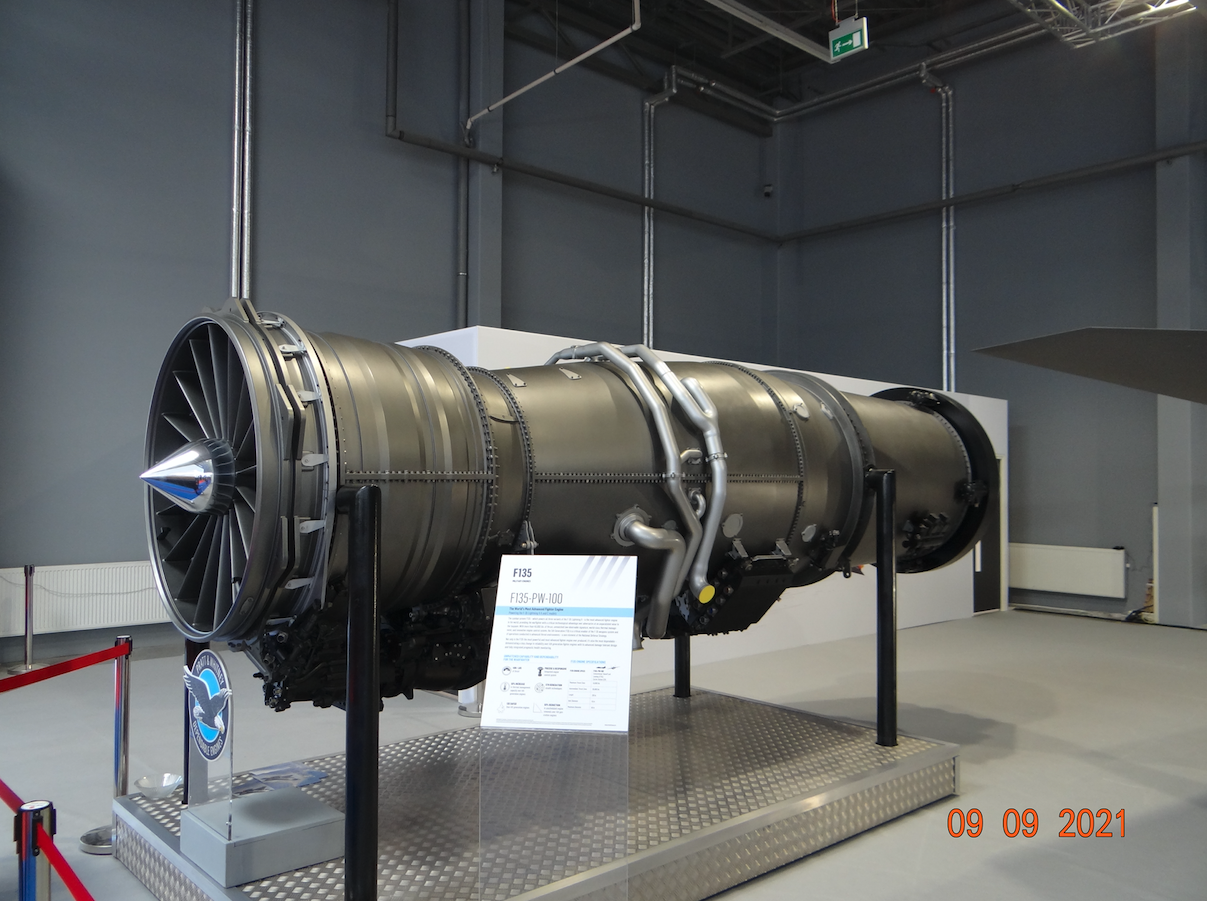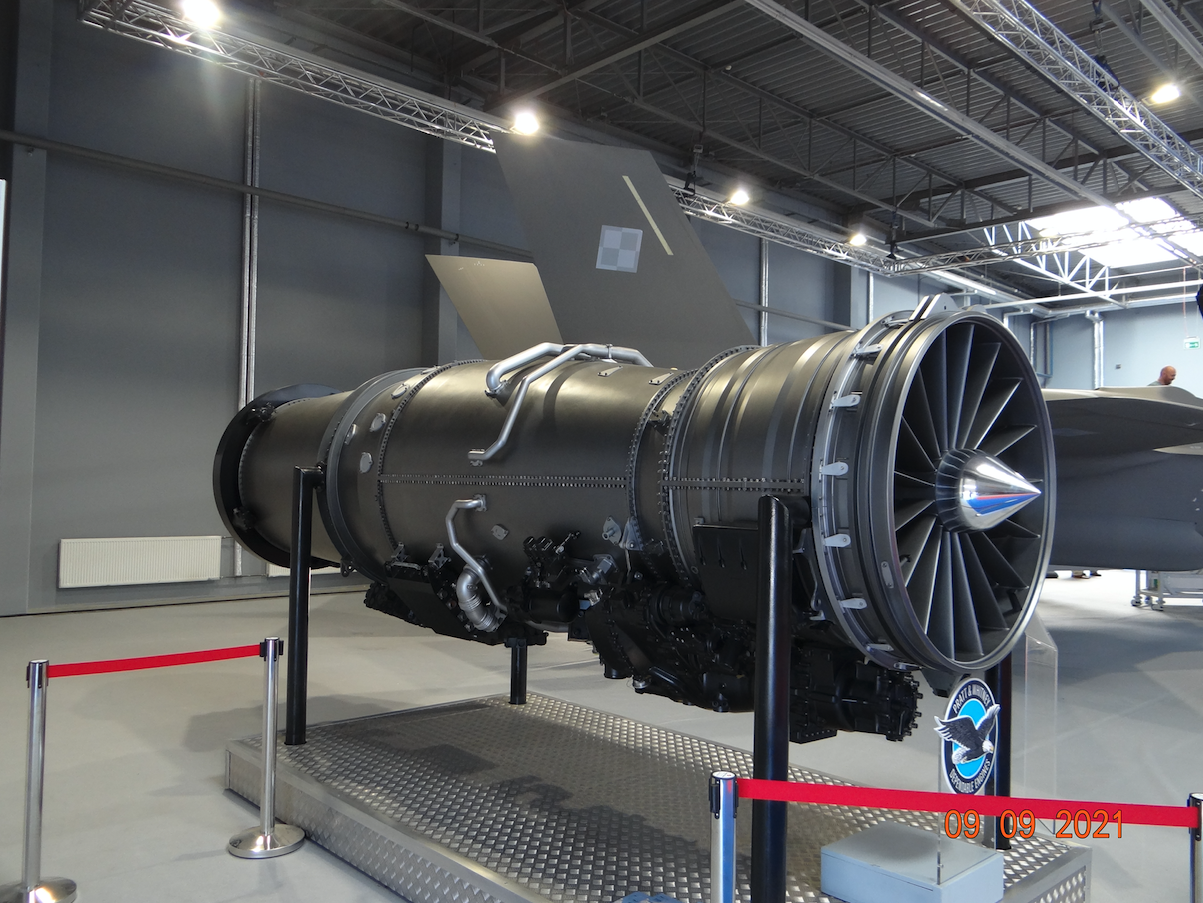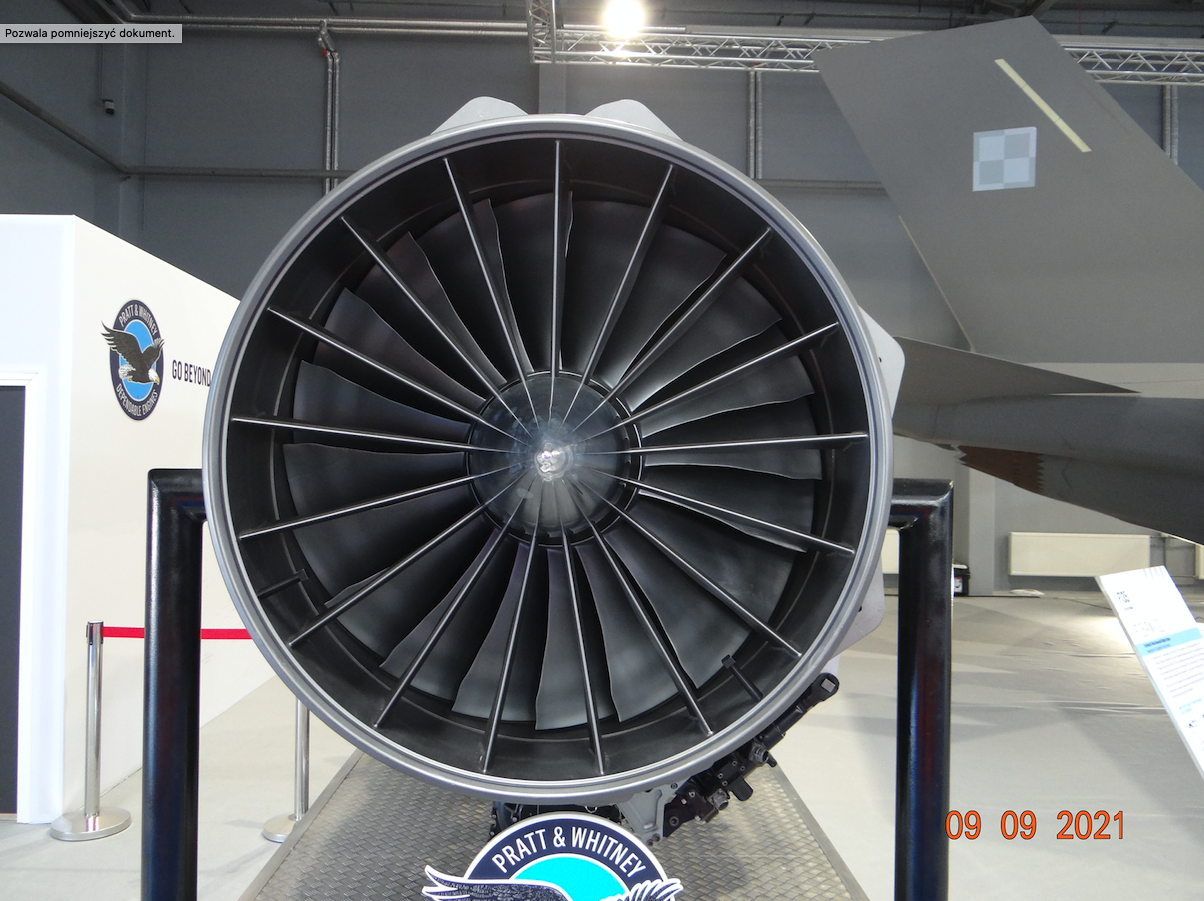Kraków 2022-09-21
Pratt & Whitney F135.
Silnik Pratt & Whitney F135 jest turbowentylator z dopalaniem, opracowany był dla Lockheed Martin F-35 Lightning II, jednosilnikowego myśliwca uderzeniowego.
Silnik występuje w dwóch wariantach; Wariant konwencjonalnego startu i lądowania (CTOL) stosowany w samolotach F-35 A i F-35 C oraz wariant dwucyklowego krótkiego startu i lądowania w pionie (STOVL) stosowany w samolotach F-35 B. Ta duga odmiana ma dodatkowy wentylator z przodu do pionowego ciągu (wentylator podnoszący) oraz ruchomą dyszę wylotową dla ciągu poziomego i podnoszącego.
Podstawą dla silnika F135 był silnik Pratt & Whitney F119, który jest używany w samolotach F-22 Raptor. Silnik F135 konkurował z silnikiem General Electric/Rolls-Royce F136. Silnik F135 powstał w firmie Lockheed Corporation Skunk Works, która starała się opracować trudno-wykrywalny myśliwiec uderzeniowy STOVL dla Korpusu Piechoty Morskiej USA, w ramach programu DARPA z 1986 roku. Wentylator podnoszący powstał z wykorzystaniem wentylator pierwszego stopnia z silnika F119. Pozostałe elementy wykorzystano z silnika F100. Chodziło o sprawdzenie trafności koncepcji. Na końcu silnika dodano kierowaną dyszę wylotową. W czasie testów potwierdziły się przyjęte założenia. Dokonano modyfikacji poszczególnych modułów silnika dla zwiększenia ciągu, zarówno w pracy klasycznej jak i w układzie podnoszącym.
Po wyborze silnika F135 do programu dołączyły firmy Rolls-Royce i Hamilton Sundstrand. Firma Rolls-Royce była odpowiedzialna za system podnoszenia pionowego dla samolotu STOVL. Firma Hamilton Sundstrand była odpowiedzialna za elektroniczny system sterowania silnikiem.
Pierwsze silniki produkcyjne Pratt & Whitney F135 dostarczono w 2009 roku. Od 2009 roku, opracowano trwalszą odmianę silnika F135. Jednak wynikły trudności bo w silniku przed turbiną panowały wyższe temperatury niż zakładano, a to nie sprzyjało wydłużeniu żywotności łopatek wirnika. Postanowiono wykorzystać nowsze technologie, ale to zwiększyło koszty programu, silnika i samego samolotu. W czasie dalszych testów okazało się, że wystąpiły pęknięcia łopatek turbiny. Należało je przeprojektować, a to zwiększyło ich wagę. W lipcu 2014 roku, doszło do awarii wentylatora. Urwały się jego łopatki i przebiły zbiorniki paliwa. Powodem było zbyt duże wydłużenie łopatek i tarcie o wewnętrzny stojan, inicjując zbliżającą się awarię. Pojawiające się problemy, rozwiązywano systematycznie. W 2015 roku, z powodu wykrycia kolejnych mikopękniemć należało po raz kolejny zwiesić loty samolotów Lockheed Martin F-35.
Podnoszenie dla wersji STOVL w zawisie jest uzyskiwane z dwustopniowego wentylatora podnoszenia umieszczonego przed silnikiem oraz ruchomej dyszy wylotowej. Turbina niskiego ciśnienia napędza wentylator podnośnika poprzez przedłużenie wału z przodu wirnika niskiego ciśnienia i sprzęgło. Podczas pionowego podnoszenia nie jest używany dopalacz silnika. W locie konwencjonalnym dopalacz zwiększa ciąg silnika o 52 %, ale kosztem znacznego wzrostu zużycia paliwa. Samolot w locie konwencjonalnym, bez użycia dopalacza, ma prędkość maksymalna 1,2 Ma, a z dopalaniem 1,6 Ma. Dysza wylotowa silnika i klapki regulowanej dyszy są pokryte ceramicznymi materiałami pochłaniającymi promienie radarowe (RAM). Klapek jest 15.
Silnik wyposażono w układ monitorowania w czasie rzeczywistym. W centrum serwisowym, stan silnika jest oceniany na bieżące bez udziału pilota. W 2017 roku, firma Pratt and Whitney ogłosiła, że silnik w wersji obecnej spełnia postawione przed nim kryteria. Firma jednocześnie podała, że przystąpiła do opracowania wersji zmodyfikowanych Block 1 i Block 2.
W Polskich samolotach F-35 A będą używane silniki klasyczne F135-PW-100.
Dane T-T silnika F135-PW-100:
Silnik ma dwa wały, przepływ osiowy, dwa przepływy. Długość 220 cali (559 cm). Średnica 46 cali (117 cm) maks., 43 cale (109 cm) na wlocie wentylatora. Sucha masa 3750 funtów (1 701 kg). Współczynnik obejścia 0,57:1. Ciąg bez dopalania 28 000 lbf (128 kN). Ciąg z dopalaniem 43 000 lbf (191 kN). Całkowity stosunek ciśnień 28:1.
Silnik składa się 3-stopniowy wentylator, 6-stopniowa sprężarka wysokociśnieniowa, pierścieniowa komora spalania, 1-stopniowa turbina wysokociśnieniowa, 2-stopniowa turbina niskociśnieniowa.
Opracował Karol Placha Hetman



